Why Zebras Have Stripes
Almost nothing is accidental in nature. Often, specific features of animals and plants, like the length of their coat or the shape or color of a flower, have their own special purpose. Zebra stripes are one of the most unusual patterns in nature, and scientists have debated their purpose for a very long time.
But nowadays, the main purpose of this coat pattern is most likely defined. 5-Minute Crafts would like to tell you about why zebras have stripes. And at the end of the article, you’ll find the answer to the question, “What color is the zebra after all: black or white?”
The theories about a zebra’s stripes
The San bushmen of Namibia’s Kalahari have a tale explaining the origin of the zebra’s striped pattern. According to the legend, a long time ago there was one last source of water in the Kalahari desert, which was guarded by an evil baboon. He proclaimed himself the ruler of this place and forbade all other animals to drink from the source.
The animals were very afraid of the baboon and didn’t dare to approach the source. Only one thirsty zebra with snow-white skin decided to fight the invader. It pushed the monkey, and he landed on the rocks with such force that he completely lost his fur on the back-end. Since then, baboons have had no hair in that area.
However, it wasn’t easy for the zebra either. Having defeated the baboon, it fell exhausted right where the monkey’s fire was burning. The flames burned the animal’s white coat and left long striped marks on it. The zebra instantly came to its senses and galloped to the savannah, which it continues to inhabit to this day.
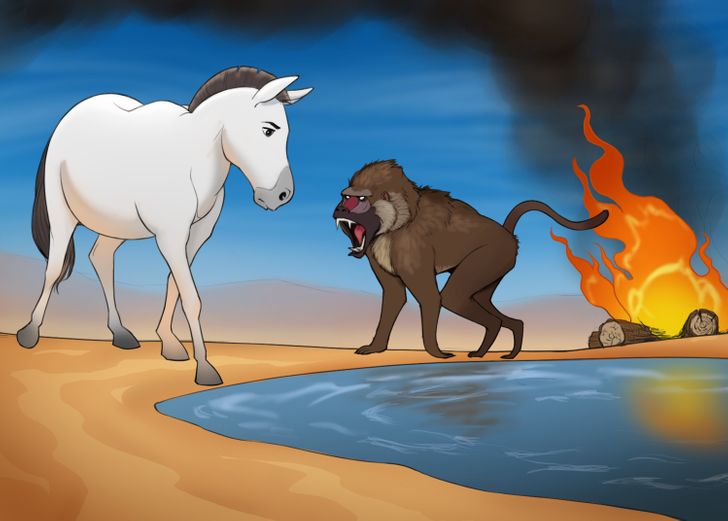
Of course, this explanation for the origin of the stripes on the zebra’s body is only a beautiful legend. The reality is more prosaic. Discussions about the purpose of the stripes have been going on since the time of Charles Darwin, and over the years, scientists have come up with many “striped” theories. The most popular theories say that the zebra needs this pattern for camouflage, or for protection from predators and insects, or for social interaction, or for the purpose of avoiding overheating, etc.
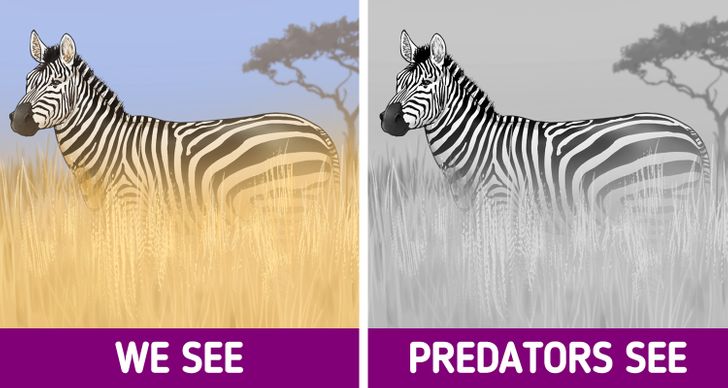
- Theory 1: Stripes help zebras hide from predators.
At first glance, this assumption may seem absurd, because the zebra’s coat is in strong contrast to the surrounding nature. However, only our eyes see it this way. Lions, who are the main predators that hunt zebras, are color blind and see the world in white-gray-black tones. It can be difficult for them to distinguish a zebra in tall grass. And the opponents of this theory often point out that zebras don’t try to hide, but flee when they see predators.
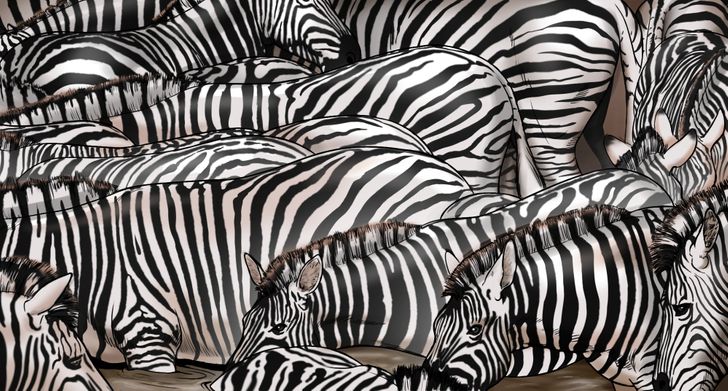
- Theory 2: Zebra stripes confuse predators.
According to this assumption, zebras, gathering in a dazzle, are able to look like an optical illusion and confuse predators. It can be difficult for a hunter to choose one animal to attack, especially if the dazzle is moving.
The counter-argument to this theory is that zebras are not trying to enhance the effect of the illusion that protects them when fleeing from predators.
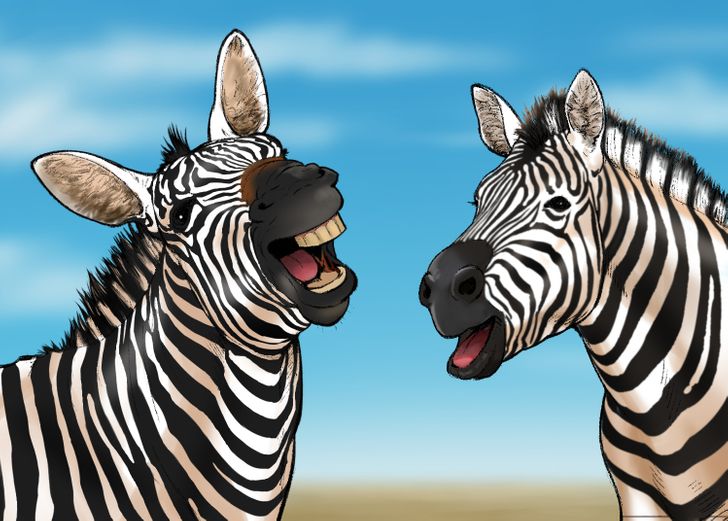
- Theory 3: Stripes allow zebras to recognize each other.
The patterns of different zebras are not identical, each pattern is unique. Therefore, this theory claims that stripes work like a barcode identifier, allowing animals to recognize each other.
However, the opponents of this theory say that ordinary horses are capable of recognizing their fellow horses, even though they don’t have stripes on their body.
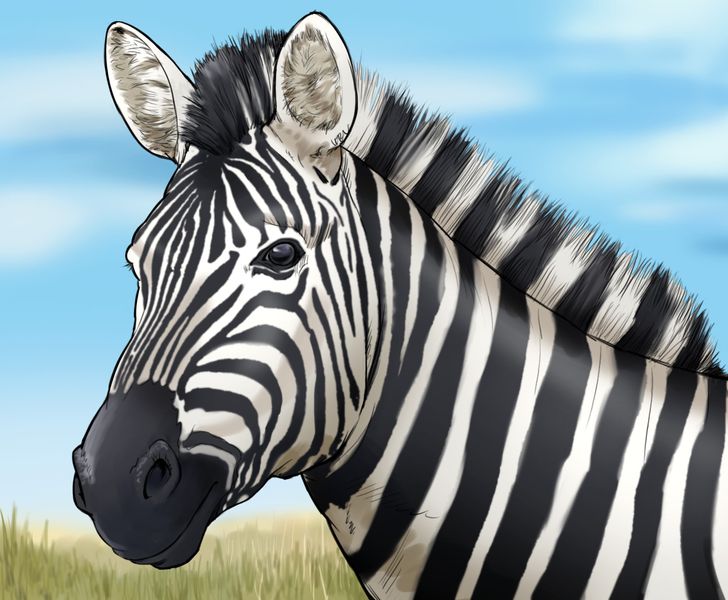
- Theory 4: Stripes help zebras cool down.
Scientists found that areas with dark stripes on the zebra’s body heat up 12-15 degrees more than areas with white stripes. Hence, it was suggested that this steady temperature difference created a cooling airflow that moved along the animal’s back.
The researchers also noticed that the hairs on the dark stripes raise up in the early morning and at noon. This is presumably to keep the zebra warm in the cool morning hours and to help sweat evaporate in hot weather.
This may be due to the fact that zebras have to spend a lot of time under the scorching sun.
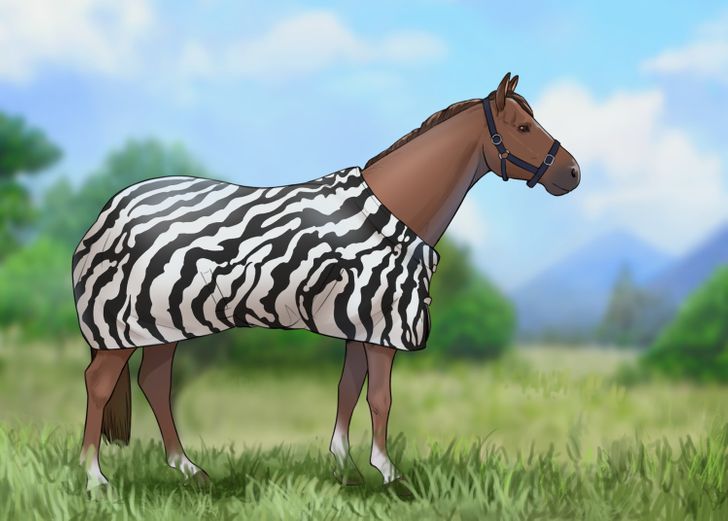
- Theory 5: Stripes reduce the number of fly bites.
The theory that stripes protect zebras from insect bites has been around since the 1930s. Thanks to new research in recent years, it’s considered one of the most probable ones.
The blood-sucking insects of Africa pose a serious threat to animals because they carry serious diseases. The thin skin of the zebra can’t protect it from fly bites, but the tests of the diet of tsetse flies showed no trace of zebra blood. Why?
In 2014, a team of biologists from the University of California conducted an experiment where ordinary horses were dressed in striped black and white capes that mimicked the pattern of zebra stripes. Real zebras and horses without capes also walked around next to them.
Scientists noticed that horseflies circled all animals in the same way, but they landed on the zebras and horses in the striped capes much less often. Even though they continued to attack the uncovered heads of the horses in the capes.
The insects had no problem getting close to the animals, but the landing was always difficult. The stripes seemed to confuse the insects. After analyzing the video, the scientists became convinced that their assumption was right.
Which theory is right
The theory that stripes protect zebras against insects has the strongest evidence to date. With a high degree of probability, it explains why zebras need this pattern.
The theory of cooling down may also be correct. But scientists continue to look for evidence in favor of it.
It’s also likely that the zebra’s pattern could have appeared due to a combination of several reasons.
Bonus: Is the zebra black with white stripes, or white with black stripes?
Most likely, the zebra is black with white stripes. At least this opinion is supported by most experts. And there are 2 reasons for this:
1. Only the fur is striped, the zebra’s skin is dark.
2. Each hair of the zebra grows from a hair follicle, which contains melanocyte cells that make the animal black. But they are deactivated in the places where there are white stripes. It turns out that the white areas on the zebra’s coat are fur that lacks pigmentation.